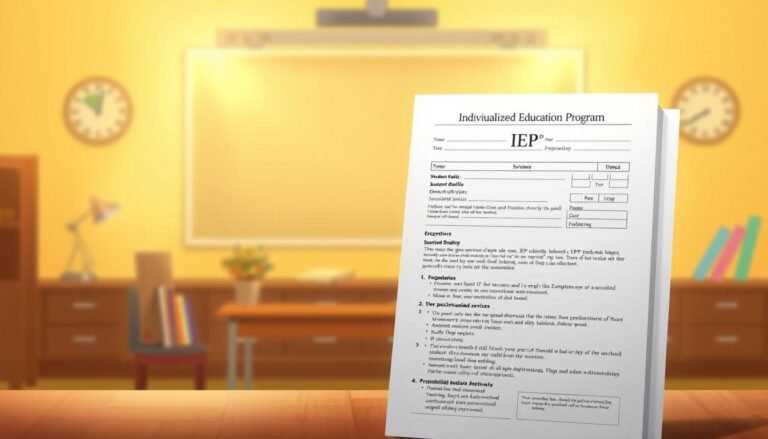
Breaking Down Barriers: Essential Tips to Support Your Child’s IEP Goals
Introduction
Every child has unique needs and potential. For children with disabilities, having an Individualized Education Program (IEP) is critical to their educational success. However, navigating the world of IEPs can feel like running an obstacle course fraught with challenges and barriers. This journey requires dedication, patience, and a solid strategy. In this article, we will delve into Breaking Down Barriers: Essential Tips to Support Your Child’s IEP Goals, offering practical advice and impactful strategies to help parents and guardians advocate effectively for their children. Let’s take the first step together in empowering your child to thrive in their educational journey.
Understanding the IEP: A Foundation for Success
| An IEP is a legal document that outlines the specific educational goals tailored to meet the unique needs of a child with a disability. It serves as a roadmap for teachers, parents, and specialists. Recognizing the components of an IEP is essential in breaking down barriers to ensure successful outcomes. Below are the critical sections of an IEP: | Section | Description |
|---|---|---|
| Present Levels | Details about the child’s current academic and functional performance. | |
| Goals and Objectives | Specific, measurable goals that the child aims to achieve. | |
| Services Provided | List of services, such as speech therapy or occupational therapy. | |
| Accommodations | Modifications to the learning environment or teaching methods. | |
| Transition Planning | Plans for post-secondary education or employment for older students. |
By understanding these components, parents can advocate more effectively and collaborate better with educators.
Effective Communication: A Cornerstone of Advocacy
Effective communication is vital in any partnership, but it’s especially crucial in the relationship between parents and educators. Breaking down barriers often starts with clear and open communication. Here are some tips:
1. Establish Trust with Educators
Building a rapport with your child’s teachers and special education staff fosters a supportive environment. Regular meetings, emails, or phone calls can keep both parties informed and aligned on the child’s progress toward IEP goals.
2. Be Direct and Honest
Convey your thoughts and concerns about your child’s educational needs without hesitation. For example, when discussing goals, offer specific examples of challenges your child faces. This clarity will help educators tailor their approach.
3. Document Everything
Keeping meticulous records of meetings, correspondence, and progress monitoring is vital. This paperwork can be instrumental when advocating for changes or enhancements to your child’s IEP.
Case Study: The Johnson Family
The Johnson family faced significant challenges navigating their son Ethan’s IEP. Initially, they struggled with communication barriers with the school team. However, after attending a workshop on effective advocacy skills, they learned to document Isaac’s progress and communicate clearly about their expectations. This proactive approach led to successful amendments to his IEP, resulting in greater academic achievement.
Setting Measurable and Attainable Goals
Setting clear, measurable IEP goals is central to the success of the IEP process. These goals must align with your child’s unique abilities and needs.
1. SMART Goals
Ensure that the goals set in the IEP are SMART: Specific, Measurable, Achievable, Relevant, and Time-bound. For instance, instead of a vague goal like "improve reading skills," a SMART goal may state, "By the end of the semester, John will read three grades higher in his reading assessment."
2. Involve Your Child
Where appropriate, involve your child in setting their own goals. This inclusion can foster a sense of ownership and motivation. Encourage them to express their aspirations, be it improving in math or participating in group activities.
3. Regular Review and Adjustment
Goals shouldn’t be set in stone. Establish a timeline for regular reviews of the IEP goals to assess progress and make necessary adjustments. This flexible approach can help address any obstacles or barriers as they appear.
Case Study: The Martinez Experience
When Maria Martinez’s daughter Sofia was diagnosed with dyslexia, the family worked closely with their school to establish IEP goals. They used the SMART format, and through regular evaluations, the family adjusted these goals based on Sofia’s progress. This adaptability was a pivotal factor in Sofia’s success.
Utilizing Available Resources
Knowing where to find resources is an essential part of advocating for your child. Break down the barriers by utilizing support systems available in your community.
1. Special Education Advocacy Groups
Many organizations provide resources, support, and guidance. Consider connecting with groups like the Council for Exceptional Children or local parent advocacy groups.
2. Educational Consultants
Hiring an educational consultant can provide expert guidance on navigating the IEP process. These professionals can offer insights into best practices in setting goals and securing services.
3. Online Resources
Make use of online platforms that provide templates, legal advice, and community forums. Websites like Understood.org offer valuable insights for parents managing IEPs.
Table: Examples of Available Resources
| Resource Type | Examples | Description |
|---|---|---|
| Advocacy Organizations | Council for Exceptional Children, Wrightslaw | Provide information and support to parents. |
| Educational Consultants | Local special education experts | Offer personalized strategies and assistance. |
| Online Platforms | Understood.org, National Center for Learning Disabilities | Resources and information for parents. |
Collaborating with Professionals
To break down the barriers that hinder your child’s educational progress, a strong partnership with professionals is essential.
1. Build a Team of Support
In addition to educators, your child may benefit from various professionals, including therapists, counselors, and medical specialists. Establishing a cohesive team ensures that everyone is on the same page regarding goals and interventions.
2. Engage in Team Meetings
Regularly participate in meetings with the IEP team. Being an active participant not only keeps you informed but demonstrates your commitment to your child’s educational partnership.
3. Share and Celebrate Progress
Collaboration is about sharing both successes and challenges. Celebrate progress, no matter how small, and keep the team updated on achievements at home. This positivity fosters a constructive learning environment.
Case Study: The Smith Collaborative Approach
For Riley Smith, team meetings became an instrumental part of her IEP journey. By bringing together her teachers, therapists, and family, they created an inclusive environment. Utilizing consistent communication methods led to marked progress in her educational achievements.
Developing Social and Emotional Skills
While academic goals are crucial, addressing your child’s social and emotional needs is equally vital for their overall success.
1. Social Skills Training
Many children with IEPs benefit from social skills training, which can be integrated into their educational program. This support can provide tools for effective communication, building relationships, and conflict resolution.
2. Behavioral Interventions
Behavioral support is equally essential, especially for children facing challenges in emotional regulation. Collaborating with counselors or social workers can develop programs that address these obstacles.
3. Encourage Emotional Expression
Creating an environment at home and school where emotional expression is encouraged can help your child deal with frustration and promote resilience.
Case Study: The Thompson Family Journey
The Thompson family worked closely with a school psychologist to create a comprehensive plan for their son Leo, who struggled with anxiety. With emotional support and skills training, Leo began to express himself better and build friendships, a significant barrier previously.
Conclusion
Navigating the complexities of an IEP can be daunting, yet it also offers a unique opportunity to support your child’s growth and development. By breaking down barriers through effective communication, setting measurable goals, utilizing available resources, collaborating with professionals, and addressing social and emotional needs, parents can create a powerful support system for their child.
Remember, you are not alone in this journey. Embrace the challenges and victories, and, most importantly, inspire your child to reach their full potential. With the right tools and mindset, both you and your child can thrive in the educational landscape.
FAQs
1. What is an IEP?
An Individualized Education Program (IEP) is a legal document that outlines special education services and goals tailored for students with disabilities.
2. How can I advocate for my child’s IEP?
Effective advocacy starts with communication. Document everything, attend meetings, and collaborate with educators and specialists to ensure your child’s needs are met.
3. How often should I review the IEP?
Regular reviews should occur throughout the academic year, ideally every six months or sooner if there are significant changes in your child’s progress or needs.
4. What should I do if I disagree with the IEP?
If you disagree with the IEP, express your concerns directly to the school’s IEP team. It may also be beneficial to seek mediation or legal advice from advocacy groups.
5. Are there resources available for sibling support?
Yes, many organizations offer resources for siblings of children with disabilities, focusing on fostering understanding and support within the family dynamic.
Final Note
Remember that breaking down barriers isn’t just about navigating the system; it’s also about fostering a positive, supportive environment for your child. With dedication and the right strategies, you can pave the way for your child’s future success.
















